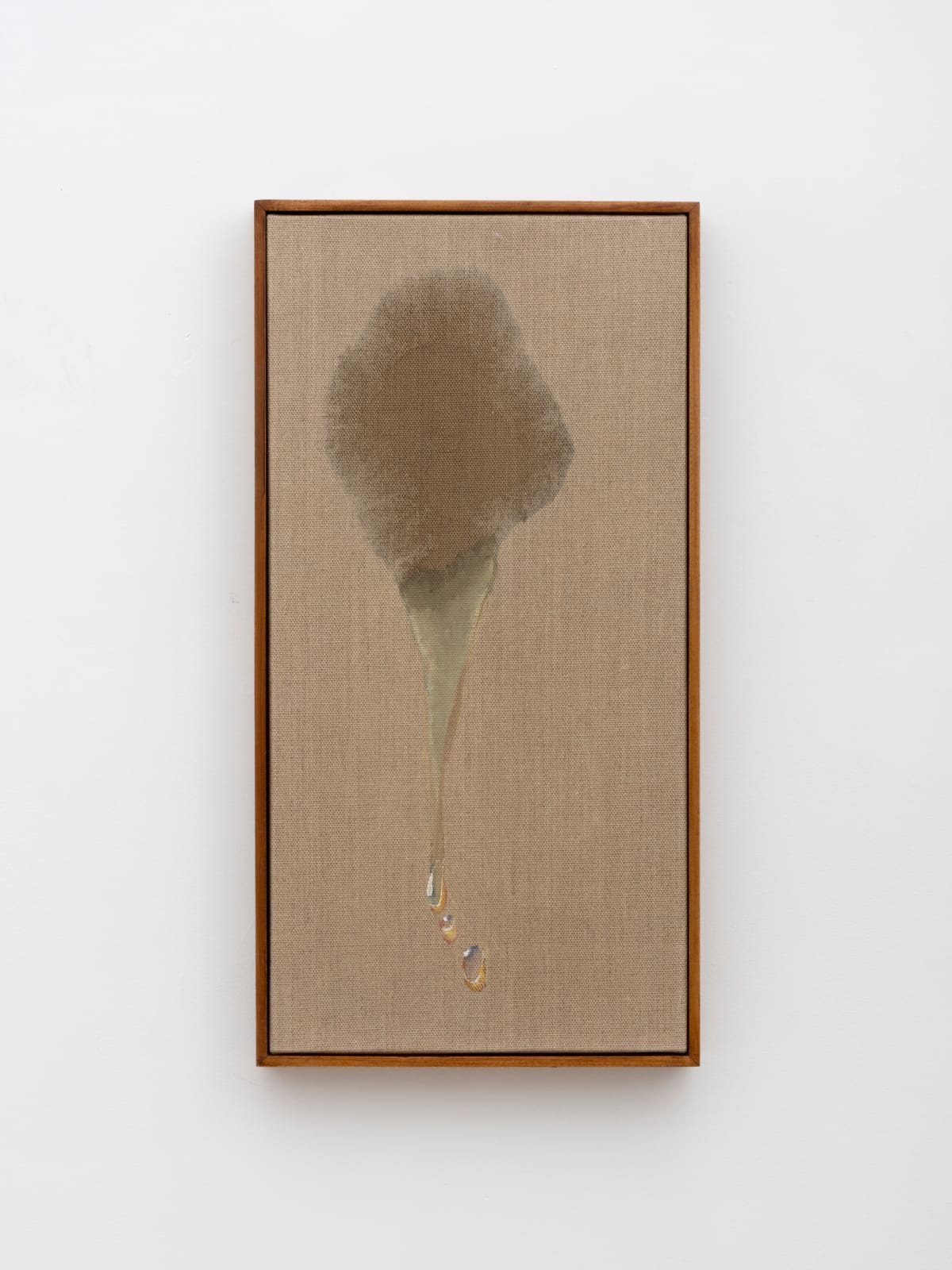
Kim Tschang-Yeul
Waterdrops, 1979
Oil and acrylic on canvas
Dimensions:
23 5/8 x 11 7/8 inches
60 x 30 cm
23 5/8 x 11 7/8 inches
60 x 30 cm
In Waterdrops (1979), Kim Tschang-Yeul captures water droplets falling down the surface of the canvas, leaving behind a visible trace. Just before they reach the edge, Kim suspends them in...
In Waterdrops (1979), Kim Tschang-Yeul captures water droplets falling down the surface of the canvas, leaving behind a visible trace. Just before they reach the edge, Kim suspends them in time, leaving their futures unknown. This notion of uncertainty and transience evokes associations with memory and the passage of time. As John Yau writes, “In a world governed by gravity, the outcome for these drops would be unavoidable... By countering gravity and suspending the waterdrops, Kim stops time. Poised on the brink of dissolution, the drops become visual metaphors for human existence. People share with these waterdops their uniqueness, vulnerability, and preciousness.” [1]
Waterdrops (1986), was completed during an era of significant geopolitical shifts that affected Korea, which influenced Kim Tschang-Yeul's artistic development. The 1980s was a time of heightened political tensions, sparked by several events such as the assassination of General Park Chung-hee in 1979, the declaration of martial law and student demonstrations, as well as the Olympic Games. This phase in Kim’s artistic practice is also characterized by his use of oil paint, which produced bolder and more vibrant hues. His notable use of raw brushstrokes on brown jute became the precursor to the artist’s later paintings that incorporate Chinese calligraphic characters.
1. John Yau in Kim Tschang-Yeul (New York: Gregory R. Miller & Co. and Tina Kim Gallery, 2022), pg. 8.
Waterdrops (1986), was completed during an era of significant geopolitical shifts that affected Korea, which influenced Kim Tschang-Yeul's artistic development. The 1980s was a time of heightened political tensions, sparked by several events such as the assassination of General Park Chung-hee in 1979, the declaration of martial law and student demonstrations, as well as the Olympic Games. This phase in Kim’s artistic practice is also characterized by his use of oil paint, which produced bolder and more vibrant hues. His notable use of raw brushstrokes on brown jute became the precursor to the artist’s later paintings that incorporate Chinese calligraphic characters.
1. John Yau in Kim Tschang-Yeul (New York: Gregory R. Miller & Co. and Tina Kim Gallery, 2022), pg. 8.
Join our mailing list
* denotes required fields
We will process the personal data you have supplied in accordance with our privacy policy (available on request). You can unsubscribe or change your preferences at any time by clicking the link in our emails.